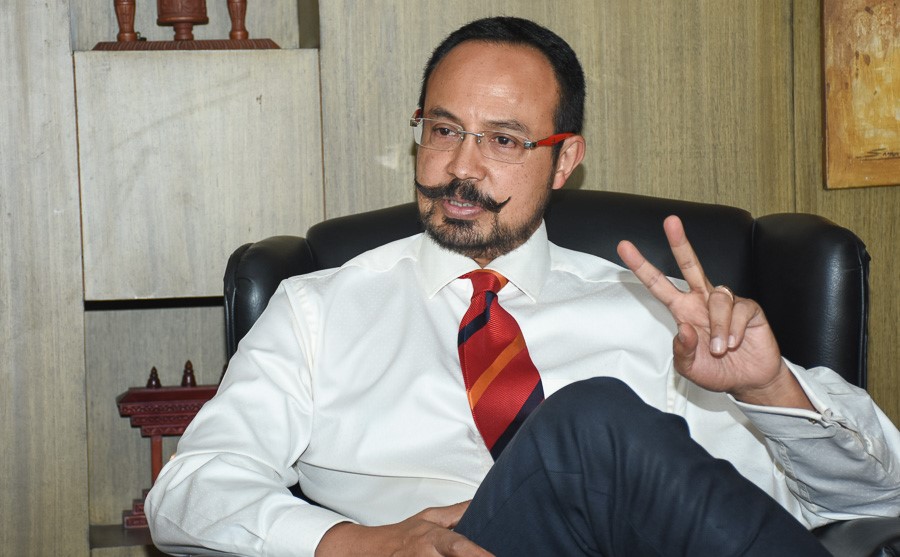The story of Air India‘s revival is intricately linked with the leadership of its Chief Executive Officer and Managing Director, Campbell Wilson. Tasked with the monumental responsibility of transforming a legacy airline under its new Tata Group ownership, Wilson has embarked on a five-year strategic roadmap, ‘Vihaan.AI’, aiming to reposition Air India as a world-class global carrier with an Indian heart. His journey at the helm, however, has been anything but smooth, marked by significant challenges and ambitious milestones.
A Background of Aviation Expertise
Campbell Wilson’s appointment in mid-2022 brought a wealth of international aviation experience to Air India. With 26 years at Singapore Airlines (SIA) Group, including a successful stint as the founding CEO of Scoot, SIA’s low-cost subsidiary, Wilson possessed a proven track record in airline turnaround and growth. His deep understanding of airline operations, customer experience, and strategic expansion made him a fitting choice to lead Air India’s ambitious overhaul.
The Herculean Task: Challenges and the Vihaan.AI Vision
Upon taking the reins, Wilson inherited an airline grappling with years of underinvestment, operational inconsistencies, and a tarnished reputation. The challenges were immense: modernizing an aging fleet, streamlining operations, enhancing customer service, and regaining market share in a highly competitive landscape.
The Vihaan.AI program, launched under his leadership, is a comprehensive blueprint addressing these issues from top to bottom. It encompasses a complete overhaul of equipment, product, technology, systems, and culture. A cornerstone of this transformation is the unprecedented order of 570 new aircraft, the largest single order in aviation history, signaling a clear intent for aggressive network expansion and fleet modernization. This massive investment aims to bring Air India’s product up to world-class standards, with modern interiors and advanced entertainment systems being progressively rolled out across the fleet.
Early Achievements and Strategic Levers
Despite the scale of the task, significant strides have been made under Wilson’s leadership. Air India’s domestic market share has grown from single digits pre-privatization to around 25-26%, with a target of 30% by the end of the five-year plan. On key metro routes, the airline already commands approximately 50% share. International connecting traffic has quadrupled, demonstrating the impact of network expansion and improved connectivity.
A key strategic move has been the consolidation of Tata Group’s aviation entities. Wilson has successfully steered the integration of Air India Express and Air Asia India into a single low-cost carrier, and the merger of Vistara with Air India is in its final stages. This consolidation aims to create a more integrated and efficient operational structure, focusing Air India Express on leisure and Tier 2/3 cities, while the flagship Air India targets premium experience and international routes.
Furthermore, Air India has re-established interline agreements with all Star Alliance carriers, a testament to its renewed commitment to customer experience and quality that was previously lacking. Investment in a new 600,000-square-foot training academy in Gurugram, along with other facilities in Bengaluru and Amravati, underscores the focus on developing a skilled workforce for the airline and the broader Indian aviation ecosystem. The airline has also invested significantly in IT infrastructure, aiming to leapfrog competitors with one of the most modern IT backbones in the industry.
Navigating Turbulence: Recent Challenges
However, the journey has not been without its setbacks. A recent tragic plane crash in Ahmedabad, involving an Air India Boeing 787-8, has cast a shadow, threatening to put ambitious turnaround plans at risk and raising renewed scrutiny on maintenance and service standards. Wilson has been at the forefront of responding to this crisis, expressing deep sorrow, ensuring full cooperation with investigations, and providing support to affected families. This incident highlights the immense pressures and responsibilities inherent in leading a major airline, where safety and public trust are paramount.
The Road Ahead: Consistency and Global Ambition
Looking ahead, Wilson emphasizes that while “the heavy lifting is done” in terms of restructuring and initial investments, the next phase is about consistency, reliability, and financial strength. The airline is focused on ensuring a consistent product and service delivery that meets customer expectations across its diverse fleet.
Air India aims not just to be India’s national carrier but a global aviation powerhouse. Wilson has highlighted the need for improved airport and airspace infrastructure in India to support projected growth, advocating for India to become a major transit hub. With a significant order book and a clear vision, Campbell Wilson is steering Air India towards a future where it is not only profitable but also a world-class airline with a distinct Indian identity, connecting people and communities globally.
The transformation of Air India under Campbell Wilson is a compelling narrative of ambition, strategic execution, and resilience. As the airline continues its journey, the aviation world watches closely to see if it truly achieves its vision of becoming a global leader.



